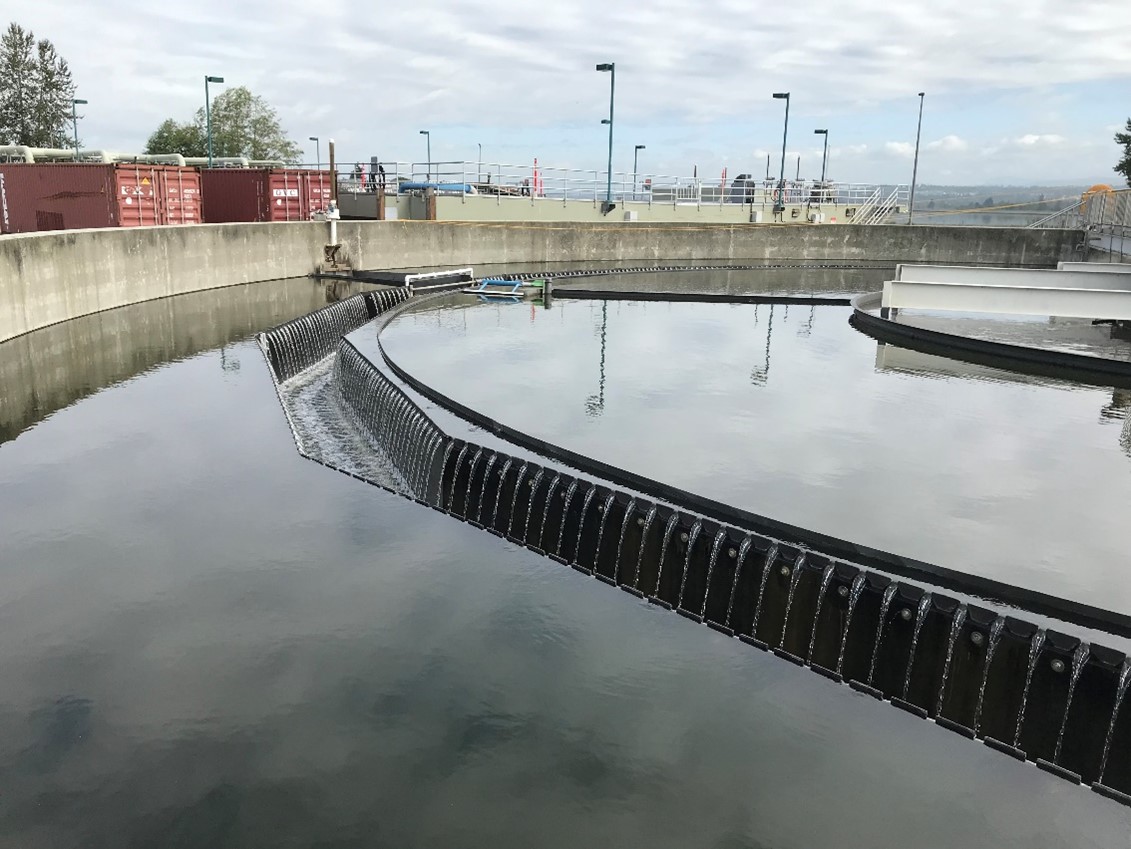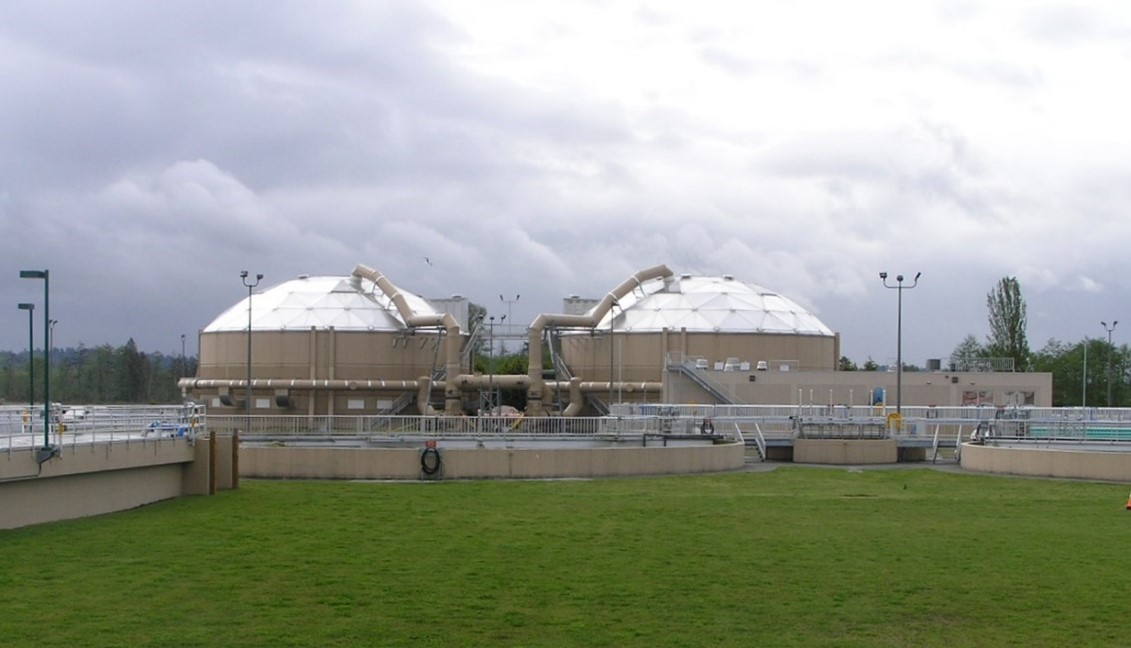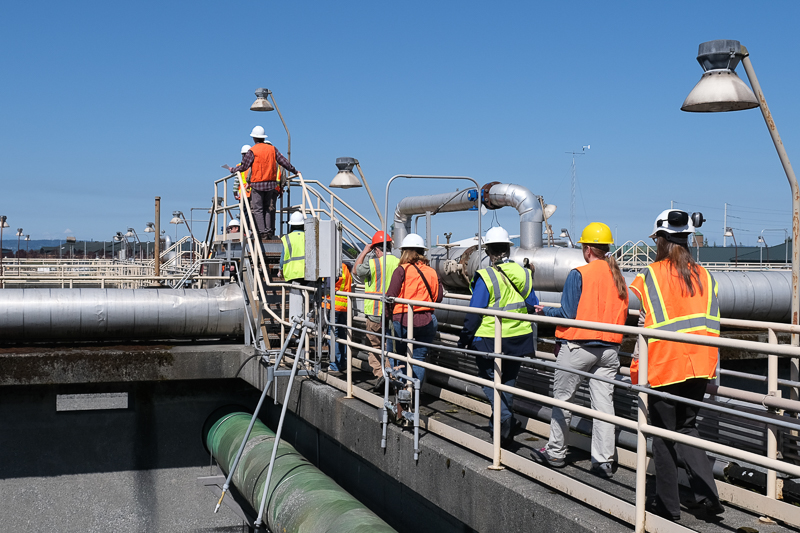
Wastewater treatment clarifiers help to remove solids that can carry pollutants into the Snohomish River or Puget Sound.
Please note: the public comment period has been extended to Jan. 31, 2024. The public is invited to an online public meeting and hearing on Jan. 11, 2024.
When you flush the toilet, it’s generally out of sight, out of mind. But that’s not the case for the operators of the approximately 300 municipal wastewater treatment facilities in the state. It’s their job to keep those systems running, getting wastewater to the facilities where they treat it and remove pollutants and then discharge it to a river, Puget Sound, or groundwater, all while protecting public health and the environment.
Ecology regulates these systems by using water quality permits. Each municipal wastewater treatment plant has a permit, which outlines how the plant must control the quality of the water that it discharges. The permits come up for renewal every five years.
Everett trickling filter towers, where wastewater flows over biofilm to remove pollutants.
The City of Everett’s Water Pollution Control Facility is one of the larger wastewater treatment plants in the state. The facility has two parallel treatment systems: a trickling filter/solids contact system and an aeration/oxidation pond (lagoon) system. The trickling filter system discharges treated effluent to Port Gardner Bay; the lagoon system discharges to the Snohomish River.
This water quality permit is now up for renewal, and we’re inviting the public to comment on the draft permit.
What’s new
We're updating the permit to match our current water quality requirements for all wastewater treatment plants. We are also proposing changes based on this facility’s unique location and circumstances.
One important change to the permit is a new requirement to identify and control the amount of PBDEs coming into the city’s system from industrial sources. PBDE stands for polybrominated diphenyl ether, a family of flame-retardant chemicals used in a range of consumer and industrial products, including foam, plastics, textiles, and electronics. PBDEs escape from products and accumulate in the environment. Because of their widespread use, PBDEs have been found in atmospheric deposition, stormwater runoff, and industrial and domestic wastewater. (Read more about Ecology's work to phase out PBDEs and develop alternative products.)
Recent studies have found elevated levels of PBDEs in juvenile Chinook salmon in certain areas of the Snohomish River, particularly in the lower estuary. PBDEs can affect the endocrine, reproductive, immune, and nervous systems in fish. Because it accumulates in fish tissue, it has effects throughout the food web and has also been found in Southern Resident Killer Whales (orca), which prey on Chinook salmon.
PBDEs enter the Everett wastewater treatment plant from multiple pathways and sources. One type of source is industrial facilities that discharge PDBEs into their wastewater, which then goes to the Everett facility. The draft permit outlines how the city must require relevant industrial wastewater dischargers to identify and control PBDEs in their wastewater before they release it into the municipal system. The permit also proposes that the city must monitor PBDE concentrations in the wastewater coming into the treatment plant in order to provide feedback on pretreatment program effectiveness.
We’re also proposing to require a similar pretreatment approach for PFAS, another family of persistent chemicals.
Combined sewer overflows
Ecology and Everett Public Works staff touring the site of the future Port Gardner Storage Facility, May 2023
In portions of older cities, the same system of pipes carries both wastewater (containing sewage) and stormwater (runoff from streets and other paved surfaces) to a wastewater treatment plant. When there are large storm events that add more water to the system than it was designed to handle, the excess water discharges at certain points called outfalls to keep sewage from backing up into homes and businesses. These events are called combined sewer overflows.
Everett has 13 permitted outfalls for these overflows. We require Everett to control combined sewer overflows so that there is no more than one overflow at each outfall per year, on average. The city’s CSO outfalls must be controlled by the end of 2027.
The city recently acquired the old Kimberly-Clark industrial wastewater treatment plant and is planning to convert it into a new facility called the Port Gardner Storage Facility. The facility will temporarily store combined sewer flows until the collection system has capacity to convey the flows to the wastewater treatment plant. Project completion is anticipated by December 31, 2027, in time to meet the CSO control deadline.
Public comment period
We’re taking comments on the draft permit through Jan. 31, 2024 (extended from the original end date of Dec. 18, 2023).
There will be an online public meeting and hearing on Jan. 11, 2024 at 2 p.m. to explain the permit, answer clarifying questions, and accept formal oral testimony on the draft permit. Register on Zoom.
To read the draft permit and the associated fact sheet, please visit the permit's event listing page. To submit comments, please visit our eComments page.

